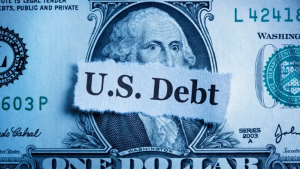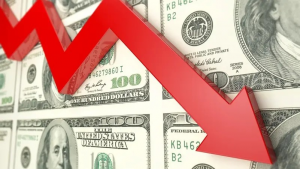The U.S. dollar fell further Wednesday, a casualty of shaken confidence in the world’s largest economy in the wake of the Trump administration’s trade upheaval, while the pound gained despite soft inflation data.
At 04:40 ET (08:40 GMT), the Dollar Index, which tracks the greenback against a basket of six other currencies, slipped 0.5% to 99.452, down over 8% over the course of this year so far.
Dollar falls on trade uncertainty The dollar has weakened further following new moves by the Trump administration in the trade war with China, the two largest economies in the world.
U.S. President Donald Trump has ordered a probe into potential new tariffs on all U.S. critical minerals imports, which are heavily skewed towards China, as part of his revolution of global trade.
Trump kickstarted a bitter trade war with China earlier this month, raising tariffs against the country to a cumulative 145%. China retaliated with a 125% duty on U.S. goods.
Much later sees the release of data showing the extent of Chinese holdings of U.S. Treasurys for February, with markets looking to see if the Chinese government is selling its U.S. assets as a result of this trade conflict.
“We doubt it would show much of a change in China’s $760bn of holdings,” said analysts at ING, in a note, “but if we’re wrong, a drop could trigger another bout of both U.S. Treasury and dollar selling.”
Also of interest will be the release of U.S. retail sales data later in the session, followed by a speech by Federal Reserve Chair Jerome Powell, following on from the surprisingly dovish tone set by his colleague Fed Governor Christopher Waller on Tuesday.
“With long-term inflation expectations derived through the USD 5Y5Y inflation swap currently falling to new lows, a similarly dovish speech from Powell tonight could weigh on the dollar,” ING added.
Euro in demand once more In Europe, EUR/USD traded 0.7% higher to 1.1364, with the single currency finding supporters once more after a pullback from last week’s surge to a three-year high of 1.1474.
Eurozone inflation is due later in the session, and is expected to show a cooling to annual growth of 2.2% in March, from 2.3% the prior month, providing the European Central Bank with more impetus to agree to a 25-basis-point cut on Thursday, bringing the ECB’s deposit rate to 2.25%.
“EUR/USD may have already put in a short term low and be heading back through the 1.1425 area to test 1.1500,” said ING.
GBP/USD traded 0.5% higher to 1.3283, near a six-month hgh, despite U.K. inflation cooling in March, raising the likelihood that the Bank of England cuts interest rates at its next meeting in May.
The consumer price index slowed to an annual rate of 2.6% in March from 2.8% in February, below analysts expectations of a 2.7% release.
The U.K. central bank held interest rates at 4.5% in March, with the voting pattern showing 8-1 in favor of holding rates, while one member voted to cut.
That said, “GBP/USD is dominated by the soft dollar story and has last year’s highs of 1.3430 in its sights,” added ING.
Yuan slips lower despite strong growth data In Asia, USD/JPY traded 0.5% lower to 142.49, with the Japanese yen buoyed by demand for safe havens remaining relatively high.
USD/CNY traded 0.1% higher to 7.3236, with trade tensions between China and the U.S. persisting still weighing on the Chinese currency as data showed that China’s economy grew more than expected in the first quarter of 2025.
China’s GDP grew 5.4% year-on-year in the three months to March 3, above the average forecast of 5.2% growth.
Other data on Wednesday showed Chinese industrial production surged 7.7% in March, beating expectations, as local producers front-loaded exports ahead of steep April 2 U.S. tariffs imposed by President Trump.
Retail sales also rose 5.9%, aided by Beijing’s stimulus measures targeting consumption.













